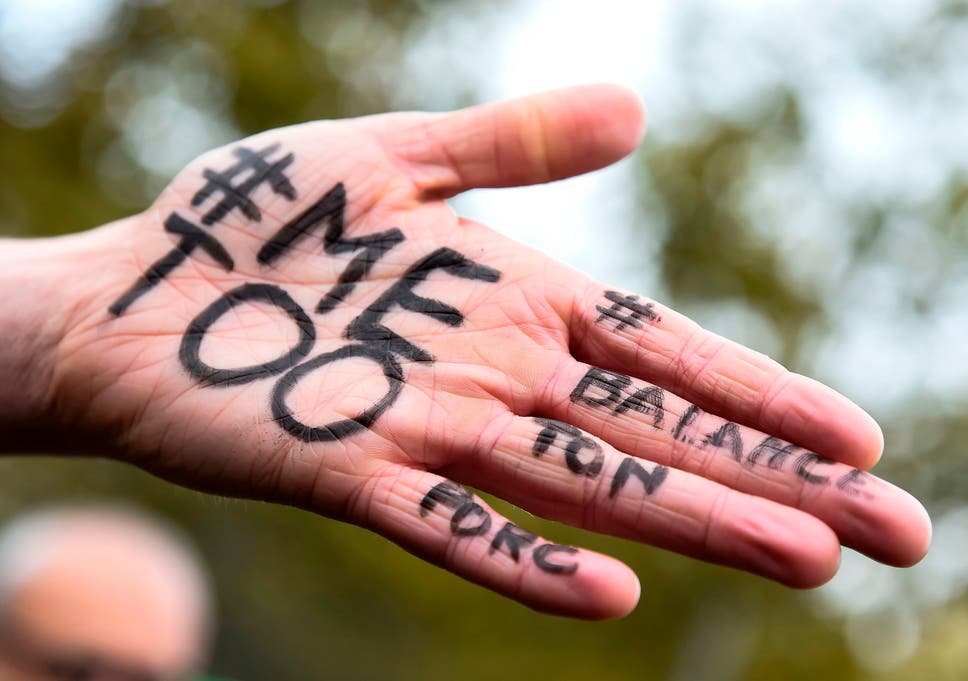We won’t give up’: French protesters defiant on day 36 of pension strikes
Issued on: 09/01/2020

A protester burns a flare during a rally against pension reform in Paris
on January 9, 2020. © Alain Jocard, AFP
Text by:Charlotte WILKINS|
Video by:FRANCE 24Follow
Hundreds of defiant protesters took to the streets of Paris on Thursday for a fourth day of nationwide demonstrations against the French government’s controversial pension reform plans.
They came by bike, by scooter and on foot. There were train drivers, teachers, doctors and lawyers. Grey skies and rain showers did little to deter a sea of orange vests from the hardline CGT union, or Yellow Vests (Gilets Jaunes) who came to show “solidarity” with opponents of the government’s pension reform.
As the strikes against French President Emmanuel Macron’s controversial pension overhaul entered their record-breaking 36th day, the protesters’ resolve showed no sign of waning.
They gathered in their hundreds at Paris’s protest central, the Place de la République. And just after 2pm – to the sound of klaxons, whistles and cheers, the raucous crowd began marching along the Boulevard de Magenta.
A group of drummers from the CGT union made their presence known. Drivers from the RATP sang songs about solidarity and a group of lawyers cried for Macron to “recule” (back off). Some let off plumes of pink smoke.
The hardline CGT union are out in force #manif9janvier pic.twitter.com/4PWeLbzwLr— Charlotte Wilkins (@CharlotWilkins) January 9, 2020
“Macron is the king of bla bla but the servant of capitalism,” said one placard. “I gave birth at work, I don’t want to die at work” read another.
“We’re not giving up. We’re going right to the end,” said Grégorie Vassaux, 46, a nurse, who added that he’d been galvanised into attending the protest by Macron’s ‘haughty” New Year’s Eve address, where the president vowed to press ahead with the reform.
“We need to show him that we’re here,” said Vassaux, “and that we don’t want this reform.”
“It’s right that we work – and it’s important that we contribute to our country’s economy,” said Vassaux, “but we have a right to 10-15 years, where we’re in more or less good health, where we can enjoy life and our kids a bit more. With these reforms I will have to work until I’m 67.”
The main sticking point of Macron’s planned pension reforms includes pushing back the retirement age at which retirees would be eligible for full pensions from 62 to 64. Unions say the measure would make millions of people work longer for less.
A points-based pension system will cost us an arm (and a leg) says this poster on the sidelines of the march pic.twitter.com/dL2DEBNWAO— Charlotte Wilkins (@CharlotWilkins) January 9, 2020
Other protesters claimed that unifying France’s 42 different pension schemes, some of which grant early retirement, into a single, universal points-based system, will widen the gap between rich and poor.
“Those who have a big salary will have a nice retirement,” said Violaine, 26, a teacher from outside Paris, “but those who are poor will stay poor. It’s not fair. I think it’s extremely hypocritical. The government talks about equality and solidarity but in reality the reform brings neither.”
Taking a toll on salaries
Violaine admitted the strike was taking a heavy toll on her salary. She’s only been striking on protest days, when unions stage rallies across the country, but she’s feeling the effects of a lower income.
“We’re not partying. We’re not shopping. We’re living on pasta,” she laughed. “But it’s worth it,” she added. “It’s called having a political conscience.”

Marie Sabrina, 34, a teacher from Seine Saint-Denis,
said Macron “needs to listen to the street”.
© Charlotte Wilkins, FRANCE 24
Train drivers from the RER B line, which connects the French capital with its international airports, had a kitty to encourage people to support them.
“We’re really touched to the bottom of our hearts by those who contribute to our kitty,” said Fabrice Archet, 46, a train driver from the RER B line, who said support from friends and family was keeping him afloat.
“It’s not necessarily the wealthy who give to our kitty – it’s often students and people who are struggling themselves.”
“We need to show the government that we won’t give up, that we’re here in the street and that he [Macron] needs to listen to us.”
Contempt for Macron
His words, and a contempt for Macron, were echoed by Marie Sabrina, 34, a teacher from Seine Saint-Denis. “It’s been a month since we’ve been protesting, and he’s not listening to us. He needs to listen to the street,” said Sabrina, for whom going on strike is a “sacrifice worth making”.
“He’s a banker. He just cares about finance and money – that he gives to his rich friends,” said Marie-Noël, an environmental educator, referring to Macron’s past as an investment banker. “He’s destroying the public sector – the education, health, and justice systems.”

Many protesters view Macron as remote and
regal. Here his tenure is styled as “the restoration
of the monarchy”. © Charlotte Wilkins, FRANCE 24
Many protesters remained defiant and determined. Jérôme de Pierre, 43, a school supervisor, said momentum was building at the school where he worked. Only two teachers out of 30 were working today, he explained, and twenty-eight were on strike. “We’re just at the beginning of the mobilisation,” he said.
“I don’t know if we’re at the beginning, the middle or the end of this protest movement,” said Archet. “What I do know is that we won’t give up – and I’m more motivated than ever before.”
French pension reform strikes enter sixth week with nationwide day of protest
Issued on: 09/01/2020

An SNCF railway worker on strike holds CGT labour union flags at the Nice railway station in France during the 36th consecutive day of strikes against the French government's pension reform plans on January 9, 2020. © Eric Gaillard, REUTERS
Text by:FRANCE 24Follow
French trade unions on Thursday brought tens of thousands of demonstrators onto the streets in a make-or-break push to force President Emmanuel Macron to abandon his planned pension reform.
France’s main unions called for Paris métro workers, state railway workers, power utility workers, dock workers, health workers, teachers, lawyers and pilots to participate in Thursday’s protests.
The interior ministry said 452,000 people nationwide answered the union leaders’ protest call, a significant decline since the first big day of action on Dec. 5, which brought 806,000 onto the streets
Just two out of 14 Paris métro lines were running as normal, with reduced service on all other lines, buses, trams and RER commuter trains.
France's national railway service, SNCF, reduced departures for five categories of trains.
Schools were shut and power generation by EDF, the country's main energy utility, was cut by about 10%.
The hardline CGT union called for anti-pension reform mobilisations to continue on Friday and Saturday.
Follow our live blog below for all the day's developments across the country.
(FRANCE 24 with REUTERS)
France braces for major rallies, more transport disruptions as pension strike continues
Issued on: 09/01/2020 -

File photo of French state-owned SNCF company worker
on strike. © Charles Platiau, REUTERS
Text by:FRANCE 24Follow|
Video by:Andrew HILLIAR
France’s powerful trade unions plan to “reinvigorate” industrial action against President Emmanuel Macron’s proposed pension reforms with nationwide demonstrations Thursday after talks between the government and union leaders earlier this week failed to break the deadlock.
France’s embattled commuters faced another day of disruptions as the longest continuous transport strikes in modern French history entered its 36th day with demonstrations planned across the country.
Reporting from Montparnasse railway station in Paris, FRANCE 24’s Andrew Hilliar noted that Thursday would mark the fourth major day of protests since the strike was called December 5, with “all the major unions calling on workers in various sectors to come out and take part in the strikes and, of course, the protests. We’re seeing Paris métro workers, state railways workers to continue the strike, but also dock workers, health workers, teachers, lawyers, pilots not just over pension reforms but over their own working conditions.”
Earlier this week, talks between the French government and unions aimed at ending the transport strike failed to break the deadlock over one of Macron’s most hotly contested retirement reform proposals.
As the standoff expanded to oil refineries, raising fears of petrol shortages, French Prime Minister Édouard Philippe said that both sides needed to "budge a little".
While insisting the reforms would not be withdrawn, he made conciliatory noises about the government's proposals to extend the minimum age for receiving a full pension to 64 from 62.
‘Pivotal age’
The strikers believe that the new points system and calculation method for their pensions would take their whole career into account, rather than just its final six months. They fear this would lower their pensions in many cases.
They're not satisfied by what the government is calling the "pivotal age"; this is a formula that would allow people to retire at 62, but would encourage them to work for two more years to get a full pension.
Previously, train drivers retired at an average age of 53 years. Other SNCF employees retired at around 58.
The pivotal age formula has been rejected by all trade unions, however. It's also disapproved of by a majority of the French public, according to opinion polls.
“Some of the unions, the more hardline unions such as the CGT for example, they’re demanding that the French government withdraw the plan all together, they’re not willing to compromise,” explained Hilliar. “Some of the more moderate unions such as the CFDT, they’re willing to compromise over the pivot age and with the government making overtures to that effect, some say the government might be hoping to reach a separate agreement with the CFDT to try to break the backbone of the strikes.”
Compromise is key
Some MPs from Macron's ruling Republique En Marche party have proposed an alternative. One of them, Hubert Julien-Laferrière, says the pivotal age formula can't be applied to everyone:
"We need a pivotal age that can adapt to the different types of careers and to the hardest jobs. Because today, we can observe a difference in the life expectancy, depending on the person's career and occupation. After 60 years of age, the difference in the life expectancy can be as much as a decade".
The areas the government seems ready to enact a compromise on are the issues of elderly people's employment and the difficult of some occupations. It's expected to announce a draft plan on these issues within two weeks.
New negotiations have been arranged for Friday on the pension funding issue. However, further demonstrations are currently arranged for the coming weekend.
(FRANCE 24 with AFP, REUTERS and AP)































